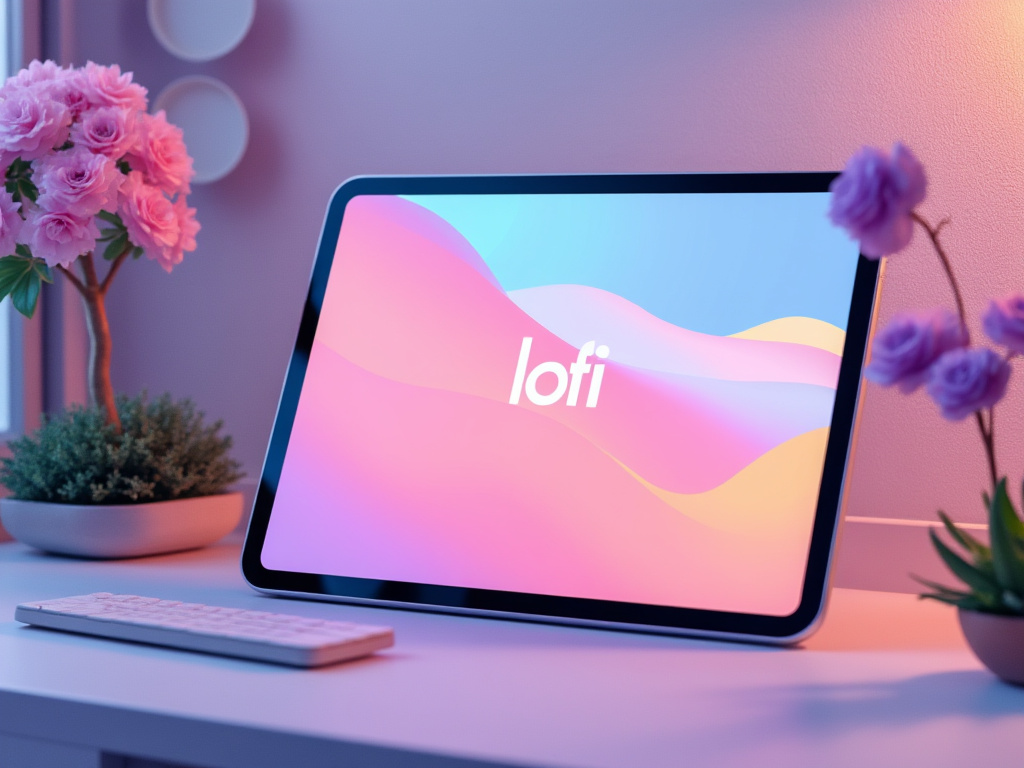Back to blog
Complete Guide To Creating a Lofi App
2024-10-03
In recent years, lofi music has exploded in popularity, providing listeners with a calming, atmospheric backdrop perfect for studying, working, or relaxing. Its mellow beats and soft instrumentals have given rise to a dedicated fan base and a growing number of apps designed to deliver continuous streams of this genre. If you're interested in capitalizing on this trend, building a lofi app is a fantastic idea. This guide will take you through all the essential steps to create a successful lofi app, from defining its core features to developing and launching it.
Why Build a Lofi App?
Before diving into the development process, it's essential to understand why a lofi app is a great investment:
- Growing Popularity: Lofi music has a strong and ever-growing fan base, making it an excellent niche market.
- Low Competition: While the genre is popular, there are still relatively few dedicated apps compared to other music genres.
- Monetization Potential: Lofi apps can be monetized through ads, premium subscriptions, or in-app purchases.
- User Engagement: These apps typically have a highly engaged user base that spends long periods of time listening, which is great for retaining users and increasing lifetime value.

Step 1: Define Your App’s Purpose and Audience
Before jumping into development, you need to clarify what your lofi app aims to achieve and who your target audience is. Ask yourself the following questions:
- What features will your app offer? Will it be a simple streaming app, or will you offer additional features like offline listening, customizable playlists, or ambient sound integration?
- Who is your target audience? While lofi music is generally popular among students and professionals who need background music for focus, your app could cater to niche groups, such as meditation enthusiasts or people seeking sleep aids.
- What platforms will you target? Decide if you will develop for Android, iOS, or both, depending on your audience's preferences and the market share of each platform.
Step 2: Research the Market and Competitors
Before building your app, it's crucial to understand the current market and the competition you will face. Study existing lofi apps to find out what works and what doesn't. Here’s how you can go about this:
- Competitor Analysis: Look into popular lofi apps like Lofi Radio and Lo-Fi Hip-Hop Radio. What features do they offer? What are their weaknesses?
- User Reviews: Pay attention to what users are saying in the reviews. Are they asking for more features? Complaining about bugs? These insights will help you create a better user experience.
- Market Trends: Stay informed about trends in both the music streaming and wellness sectors. For example, there's a growing interest in apps that offer customizable sound environments, such as adding rain or ocean waves to the lofi tracks.
Step 3: Essential Features for a Lofi App
A successful lofi app should have a core set of features that appeal to users. Here are the must-haves:
1. High-Quality Streaming
- Ensure your app supports high-quality audio streaming to deliver the best possible sound experience.
- Offer different quality settings to accommodate users with varying internet speeds.
2. Customizable Playlists
- Allow users to create and customize playlists, helping them curate their own experience.
- Include a library of pre-made playlists that are updated regularly.
3. Offline Mode
- Provide an option for users to download tracks for offline listening, particularly useful for premium users or in regions with poor internet access.
4. Background Play
- Your app should be able to play music while users multitask or lock their devices. This feature is especially important for people who use the app while working or studying.

5. User Profiles and History
- Offer user accounts so they can save their preferences and listening history across devices.
6. Sleep Timer
- A popular feature for relaxation apps, a sleep timer will automatically turn off the music after a set period, which is helpful for users who fall asleep while listening.
7. Ambient Sounds Integration
- Adding ambient sounds like rain, forest noises, or white noise can enhance the listening experience for users looking for more than just music.
Step 4: Choose the Right Technology Stack
The technology stack you choose will affect the performance, scalability, and user experience of your app. Here’s an overview of what you need for both frontend and backend development:
1. Frontend Development
- Frameworks: For Android, you can use Java or Kotlin; for iOS, Swift is ideal. Alternatively, you can use cross-platform frameworks like Flutter or React Native to develop for both platforms simultaneously.
- UI/UX Design: Invest time in creating a clean, intuitive design. Since lofi apps are often used for relaxation, the UI should be minimalistic and not distracting.
2. Backend Development
- Database: Choose a robust and scalable database like Firebase or PostgreSQL to handle user data and track streaming history.
- Music Streaming: Use a cloud-based streaming service like AWS, Google Cloud, or SoundCloud API to host and stream your music library.
- Authentication: Implement user authentication using OAuth, Firebase Auth, or a custom solution to manage user accounts securely.
3. Additional Tools
- Push Notifications: Tools like Firebase Cloud Messaging can help you notify users about new playlists or updates.
- Analytics: Use Google Analytics or Firebase Analytics to track user engagement and refine your app based on their behavior.
Step 5: Design the User Interface (UI)
The look and feel of your lofi app are incredibly important for user retention. Lofi music apps are designed to help users relax or focus, so the design should be minimal, clean, and non-distracting. Keep these design principles in mind:
- Minimalist Aesthetic: A simple design with a focus on functionality will keep users engaged. Avoid unnecessary animations or graphics.
- Color Scheme: Soft colors like pastel tones or dark themes can help create a soothing atmosphere.
- User Navigation: Ensure that all essential features (like playlists and sleep timers) are easy to access. Avoid complex menus or confusing navigation.
Step 6: Monetization Strategy
Monetizing your app is a critical aspect of its success. Consider the following strategies:
- Freemium Model: Offer a free version with ads and a premium version that offers ad-free listening, offline mode, and exclusive content.
- In-App Purchases: Allow users to purchase additional sound packs, premium playlists, or exclusive features.
- Subscription Plans: Implement monthly or annual subscription plans to generate recurring revenue from loyal users.
Step 7: Launch and Marketing
Once your app is ready, it’s time to plan a successful launch. Follow these steps for a smooth release:
- App Store Optimization (ASO): Use relevant keywords in your app's title, description, and metadata to improve visibility in app stores.
- Social Media Campaign: Promote your app on platforms where your target audience spends time, such as Instagram, TikTok, and YouTube.
- Influencer Marketing: Reach out to lofi music influencers or YouTube channels that focus on this genre for partnerships or paid promotions.
Conclusion
Building a lofi app requires careful planning, the right technology stack, and a solid marketing strategy. By focusing on creating a smooth user experience, offering unique features like offline mode and ambient sounds, and effectively promoting your app, you can tap into the growing lofi music market and build a loyal user base. With dedication and strategic execution, your app could become the go-to platform for lofi enthusiasts worldwide.
Written by: Olli Lehmusvuori